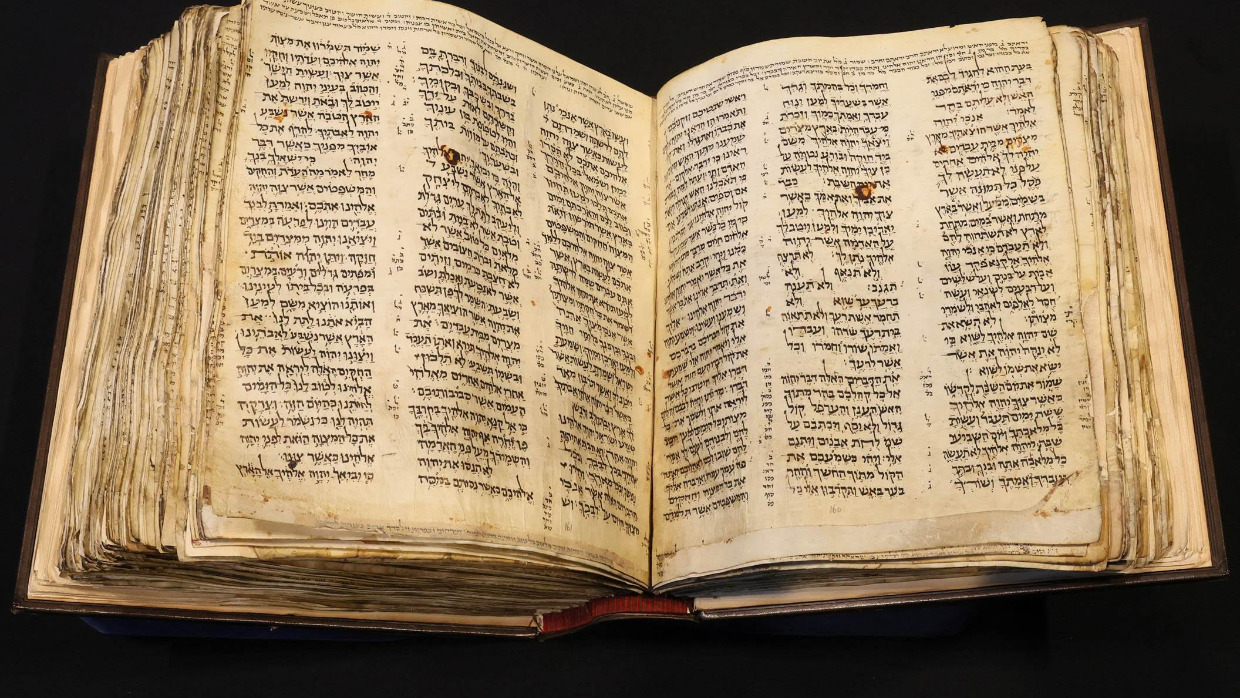 Columbia Students Once Rallied Against Nazis — Now They Cheer for Them
Columbia Students Once Rallied Against Nazis — Now They Cheer for Them


4 min read
On May 16, 2023 the “earliest most complete” version of the Hebrew Bible, the Codex Sassoon will have a new owner. With a winning bid expected in the range of $30-50 million, the Codex Sassoon may very well become the most expensive book ever sold. What makes it so special?
To appreciate the value of the Codex Sassoon, one must first understand the history of the Hebrew Bible. Since biblical times until the printing press, the sacred books of Judaism were exclusively hand-written on biodegradable materials, such as leather. With the exception of the Dead Sea Scrolls that were partially preserved in clay jars for over 2000 years in the uniquely dry climate of the Judean desert, none of the biblical scrolls from antiquity survived until the present day.
The oldest near-complete witness to the text of the Hebrew Bible, therefore, is the Codex Sassoon that was written in the first-half of the 10th century (think of a “codex” as a fancy word for a hand-written book). Hebrew codices are first attested to in the late 8th century, and there is only one other Hebrew Bible codex from as early as the 10th century —- the famous Aleppo Codex, written around the same time as the Sassoon Codex.
It is unknown in exactly which year either the Sassoon or Aleppo codices were written, because neither scribe recorded a date of completion. The estimate of the “beginning of the 10th century” and possibly “end of the 9th century” for the date of the Codex Sassoon is thus based on subtle changes in the way the Hebrew script developed, indicating its window of completion. Test results of carbon dating of the Codex Sassoon, performed prior to the upcoming auction, confirm a similar range for its completion in the late 9th or early 10th centuries.

While the Aleppo Codex is missing around 60% of the Hebrew Bible text, the Codex Sassoon is nearly complete —- thus earning it the title of the “earliest most complete” Hebrew Bible. Between the Dead Sea Scrolls and the Sassoon and Aleppo codices, for almost one thousand years, no Hebrew Bibles are known to exist!
A quick glance at the Codex Sassoon reveals that it is a very different kind of book than a Torah scroll or a biblical scroll used for liturgical purposes, and serves a very different but equally important goal. While biblical scrolls used in synagogue services contain only the Hebrew letters, the Sassoon Codex contains vowels, musical notes and other symbols, collectively known as the “Masorah” or “tradition.”
The information contained in the Sassoon Codex and similar works was essential for standardizing the text of the Hebrew Bible. There are exactly 79,976 words in the Hebrew Bible and over the course of thousands of years a small number of disputes naturally arose over each word’s exact spelling and pronunciation, particularly in the later works of the Hebrew Bible. Hebrew words as written in biblical scrolls without punctuation marks can be pronounced in multiple ways with several plausible meanings, and many common Hebrew words can sound the same with multiple spellings. How can a state of confusion, with multiple competing versions of the Hebrew Bible, be avoided?
The “Masoretes,” a group of largely anonymous sages, performed the important and meticulous task of ensuring that each copy of the Hebrew Bible would have the exact same spelling, pronunciation and even musical pitch. There are thousands of “Masoretic rules” that were developed in roughly the 6th to 9th centuries, passed along from generation to generation, in order to ensure that the biblical text continued to be preserved without disagreement before the age of printing.
While the first known owner of the Codex Sassoon was an otherwise unknown Jew named Khalaf ben Abraham, it was purchased in 1929 by the famous Iraqi-Jewish trader and scholar David Solomon Sassoon (1880-1942) who immediately understood its value and rarity. Currently, it is owned for a few more months by a descendent of the Safra Lebanese-Jewish banking dynasty, Jacqui Safra. For all those feeling the pain of sticker shock at the price tag of owning the “world’s most expensive book,” the Codex Sassoon will be on display in cities around the world for the next few months with stops in New York City, London, Tel Aviv, Dallas and Los Angeles.
